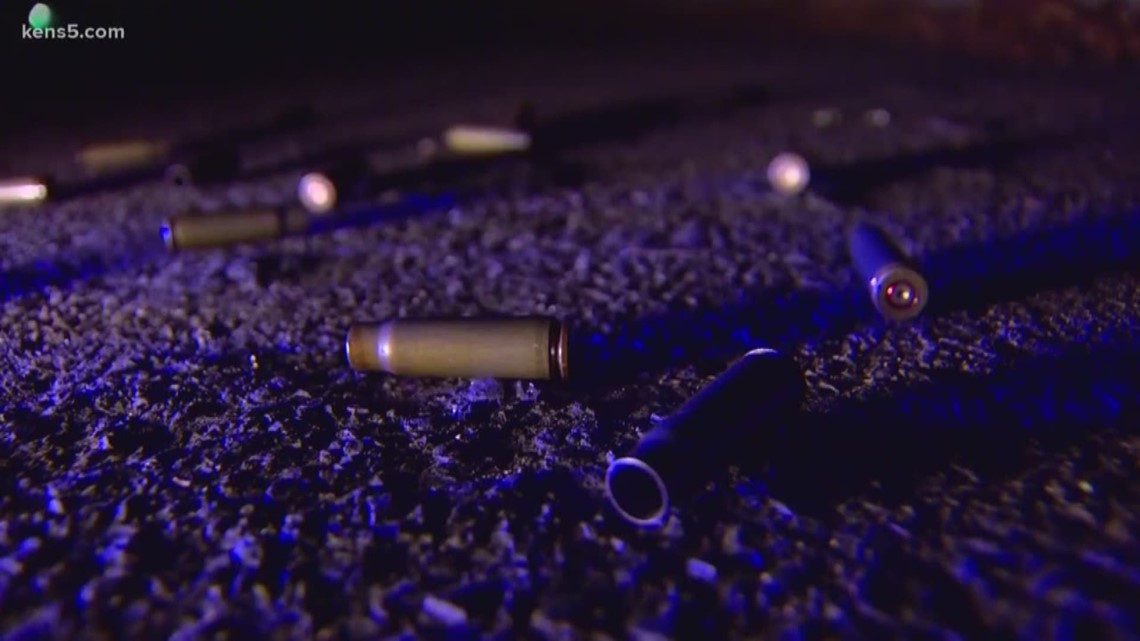SAN ANTONIO — After seeing a downward trend in officer-involved shootings over the last three years, the San Antonio Police Department saw an approximate 50% increase between 2018 and 2019, records show.
San Antonio Police Chief William McManus said while the agency, for reasons unknown, saw an increase in shootings involving officers, there was also an increase in line of duty deaths.
“There’s all kinds of situations that arise that place officers in danger,” McManuns said. “We’re relying on that training to deal with that danger, but oftentimes the officer is left with no other alternative but to use deadly force.”
In 2018, the agency reported 11 officer-involved shootings. In 2019, the number, by KENS 5’s count, rose to 18. The first three months of 2019 alone saw seven officer-involved shootings.
But between 2018 and 2019, there the number of officers fatally shot in the line of duty in Texas more than doubled, numbers on the Officer Down Memorial Page show.
“We don’t go on the street looking for these types of encounters,” McManus said.
McManus explained that even the most basic encounters could prove deadly for officers. He pointed to a 2019 mental health call that ended in the death of 27-year-old Daniel Moncada.
“We had three officers – a sergeant and two officers – who were called to the scene where a young man was acting up and his parents called...we got there and he was standing in a corner. We were talking with him; long story short: He’s got a shotgun behind his back and pulls it out without warning and fires a round at the police officers before they return fire.”
The officers escaped without injury, but McManus elaborated on how officers must make decisions in potentially lethal situations. While many may never be in a situation that requires the need for deadly force, the chief recalled his own experience.
“I remember it vividly,” he said. “It was two minutes after midnight; I was in plain clothes working with a partner. We were working on a robbery task force. We were riding down – for those familiar with Washington D.C. – we were riding down the 1500 block of U Street. There was a silhouette. I wasn’t driving, I was riding passenger in an unmarked car, not even a police car.
“I looked to my right and I saw and individual standing down a driveway with his hands up and a man in front of him with a gun pointed at him, maybe 20 yards down the alleyway. And I told my partner, ‘Turn around, there’s someone getting stuck up down the alley.’ So he turned around, we get out of the car, and we’re running toward the wall on either side of the alley and I was not even halfway across the street and I guess the guy saw us coming, saw us running, and he turned and shot at us. I ducked behind the wall, I stuck my head out and there was a guy standing right in front of me. I had my gun out, and there was a guy standing right in front of me and I didn’t know who he was, and he said, ‘I was getting robbed, I was getting robbed,’ because I had my gun pointed at him. And the guy down the alley, he’s still standing there, and I stepped out, my partner stepped out, the guy turned toward us, and we shot.”
He said that, from personal experience, it’s challenging to judge an officer’s split-second decision—especially considering their own life could be on the line.
“It’s difficult to accurately sit back after the incident, especially if you have no experience, and judge that the officer could’ve done this, could’ve done that, should’ve done this, should’ve done that.”
After an officer-involved shooting, the officers are placed on administrative leave while administrative and criminal investigations are launched. The Bexar County District Attorney’s Office handles the criminal aspect, determining whether a shooting is justified and if any action should be taken against the officer.
Meanwhile, the Complaint and Administrative Review Board, comprised of seven civilians and seven officers, determines whether the shooting followed policies and procedures. It can take months for an officer to be cleared to return to duty.
But before it comes to that, McManus said his officers are vigorously trained in de-escalation.
“That is emphasized in our academy and inculcated in every use of force scenario that we teach: Time, space, calm.”
The San Antonio Police Department’s numbers are somewhat proportional to those of the Houston and Dallas police departments. But aside from numbers, the nature of the officer-involved shootings in Houston and Dallas differ significantly from those in San Antonio.
In Dallas, ex-officer Amber Guyger was sentenced to 10 years behind bars in the 2018 murder of Botham Jean. In Houston, former officers Gerald Goines and Steven Bryant are facing felony charges in connection with a botched drug raid that resulted in the deaths of two people.
Each of the shootings involving San Antonio police in 2018 and 2019 have been deemed justified, both criminally and administratively.

